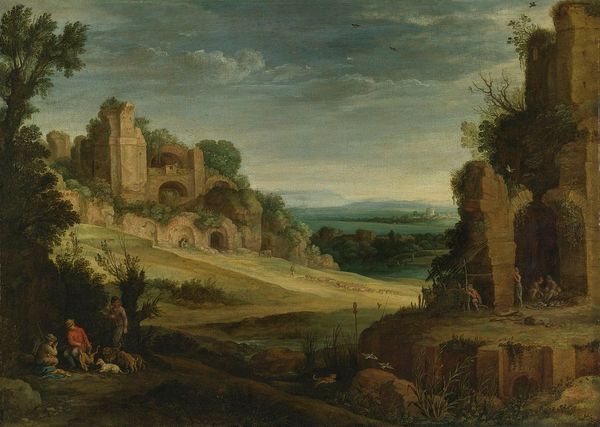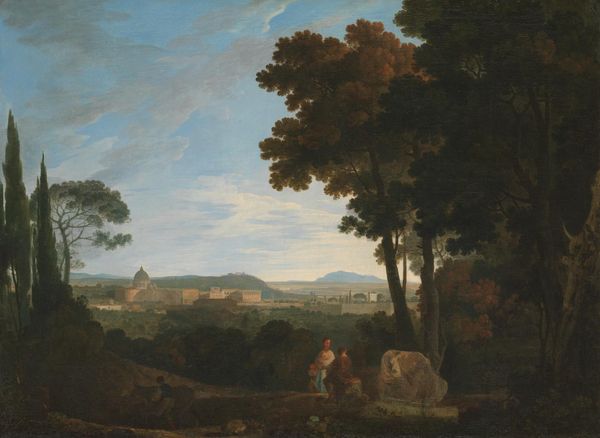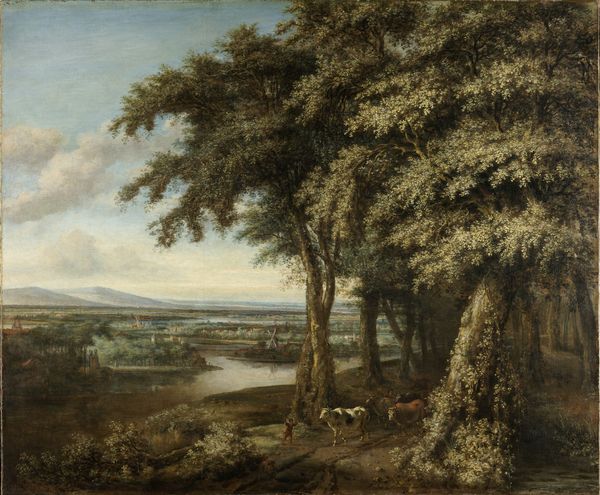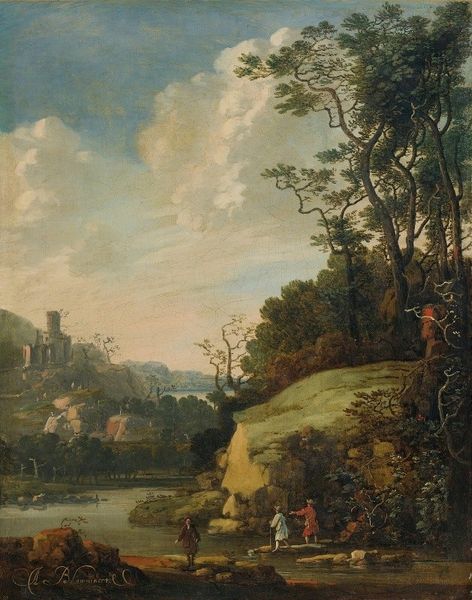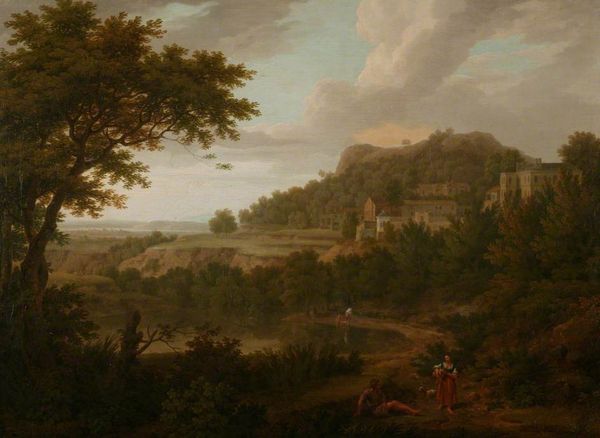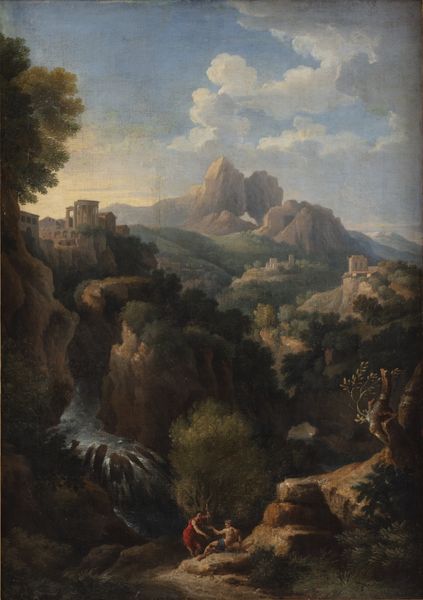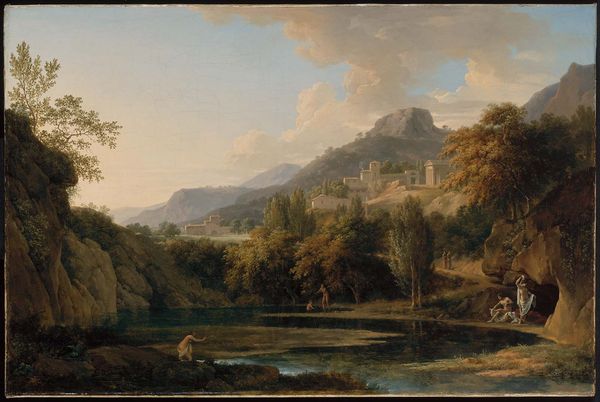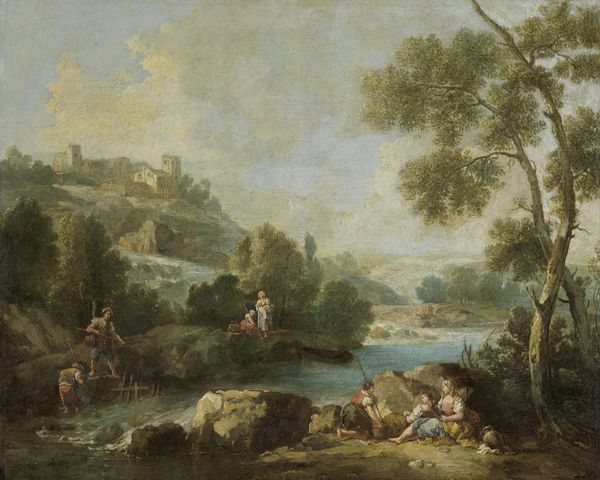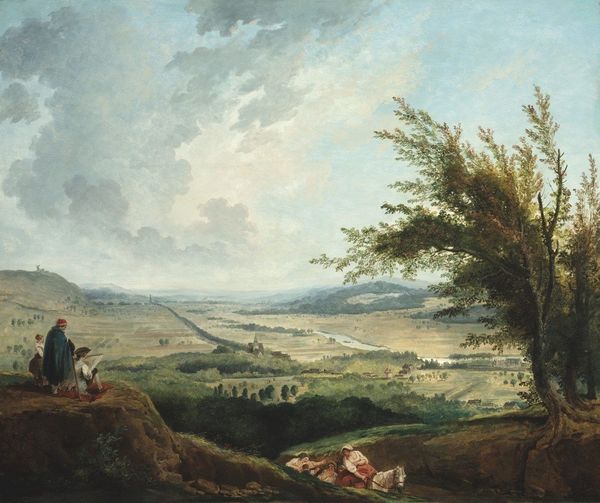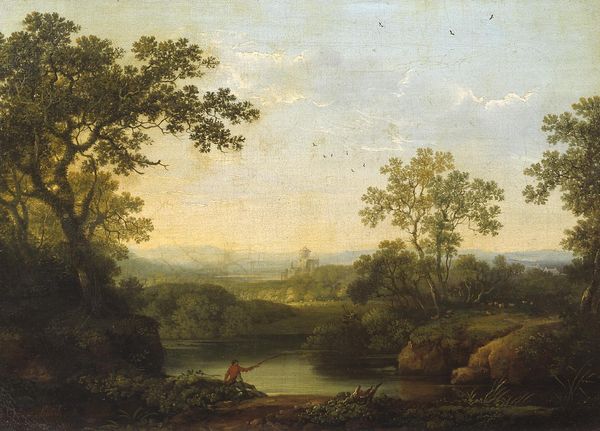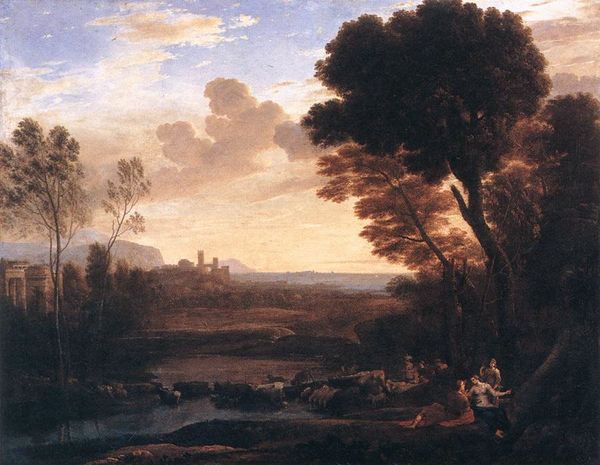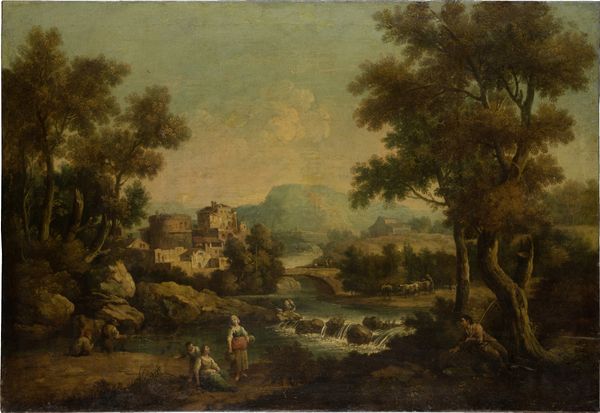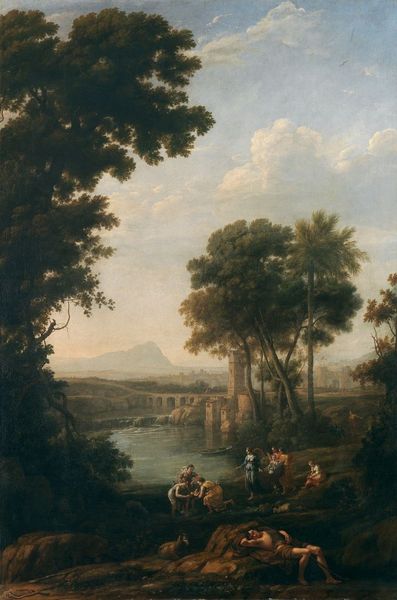
oil-paint
#
baroque
#
oil-paint
#
landscape
#
oil painting
#
cityscape
#
genre-painting
#
italian-renaissance
Dimensions: height 49.5 cm, width 68 cm
Copyright: Rijks Museum: Open Domain
Editor: Here we have Isaac de Moucheron’s "View of Tivoli", an oil painting from 1725. It has such a tranquil, almost dreamlike quality to it. What strikes me most is the way the architecture blends seamlessly into the landscape. How do you interpret this work? Curator: Well, considering this within its historical context, it’s fascinating to see how Moucheron uses this landscape not just as a backdrop but as a stage for a particular kind of cultural statement. Tivoli, with its ancient ruins, was a popular destination for Grand Tourists, primarily wealthy Europeans on educational travels. Editor: So, the painting is in part a commentary on the Grand Tour itself? Curator: Exactly. By depicting Tivoli, Moucheron is engaging with this very specific, elite audience and their expectations of Italy as a site of classical heritage and picturesque beauty. But, look at how the ordinary people going about their daily lives are juxtaposed against the grandeur of the ruins. Does this painting glorify the past, or is it about contemporary life lived in the shadow of that past? Editor: It makes you wonder who this landscape really "belongs" to, doesn’t it? I hadn’t considered how the presence of everyday figures might offer a counterpoint to the classicism the elite tourists would have been pursuing. Curator: Precisely! Think about the role of institutions too. The art market was heavily shaped by these travelers. This painting feeds into that market, selling an idealized version of Italy. Editor: I see now. So it’s less about the personal expression of the artist and more about the social and economic context in which it was created and consumed. Fascinating. Curator: Indeed. Considering how paintings like this shaped perceptions of Italy then, and perhaps continue to do so today, offers us a powerful insight into the enduring legacy of art and its role in shaping cultural narratives.
Comments
No comments
Be the first to comment and join the conversation on the ultimate creative platform.
